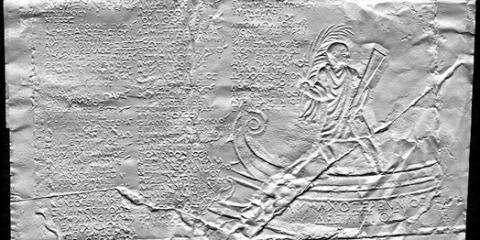
Back to top

Conference by Aaron Hershkowitz (Institute for Advanced Study)
Inscriptions are a vital category of evidence about the ancient world, providing a wealth of information about subject matters and geographical regions outside of the scope of surviving literary texts. However, to be most useful inscriptions need to be situated within a chronological context: the more precise the better. This kind of chronological information can sometimes be gleaned from dating formulae or events mentioned in the inscribed texts, but very often no such guideposts survive. In these cases, epigraphers can attempt to date a given text on a comparative basis with other, firmly-dated inscriptions. This comparative dating can be done on the basis of socio-linguistic patterns or the physical shape of letter forms present in the inscription. In the latter case, a very general date can be achieved on the basis of the changing popularity of particular letter forms and shapes in a particular geographic context, or a more specific date can be achieved if the 'handwriting' of a stonecutter can be identified. Such a stonecutter would have a delimited length of activity, so that if any of his inscriptions have a firm date, a range of about thirty years or less can be provided to all other inscriptions made by him. Unfortunately, very few scholars have specialized in the ability to detect stonecutter handwriting, but as was showed by an early attempt (see Panagopoulos, Papaodysseus, Rousopoulos, Dafi, and Tracy 2009, Automatic Writer Identification of Ancient Greek Inscriptions) computer vision analysis has significant promise in this area. The Krateros Project to digitize the epigraphic squeezes of the Institute for Advanced Study is actively working to pursue this line of inquiry, recognizing it as critical for the future of epigraphy generally.